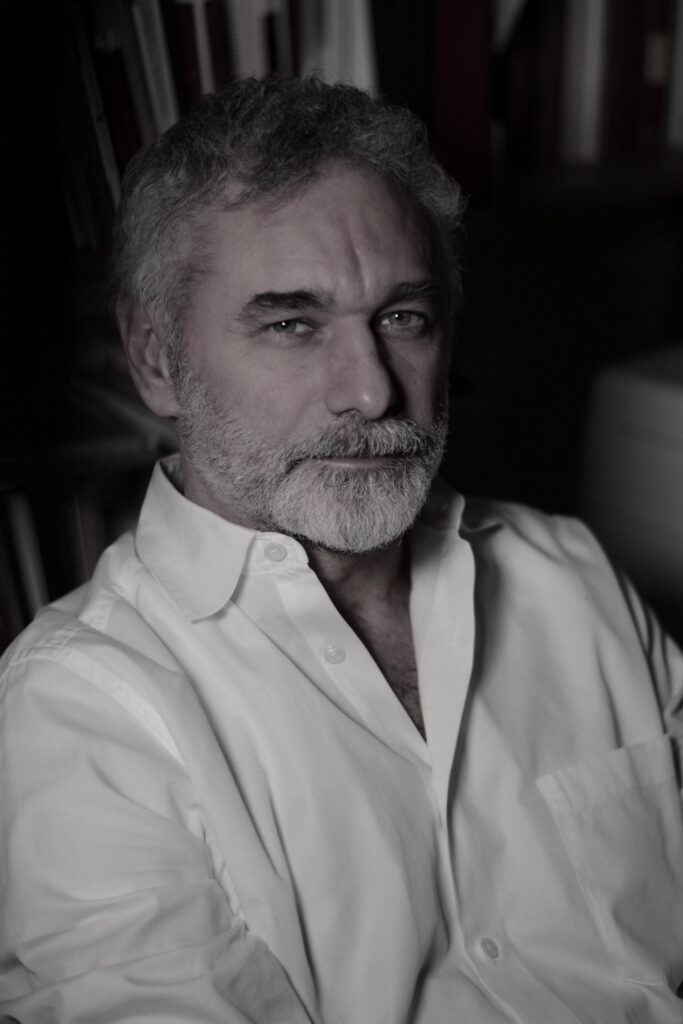
Michele Culatti, Associate Professor of Technical (SSD ICAR / 20) at the Engineering Faculty of the eCampus Telematic University.
He graduated in Architecture in 2001 at the IUAV University of Venice, with a thesis entitled “Methodological proposal for the evaluation of infrastructure works”.
In 2009 he obtained aPhD in Structural Engineering at the Engineering Faculty of Trento, with a thesis entitled “Methodological approach for determining the conceptual quality of road infrastructure works”.
He works for the assessment of the landscape-cultural impact of buildings, mainly with reference to infrastructures, also in the UNESCO context.
For many years he has been critically observing the legislation on landscape impact, highlighting the need to revise the assessment approach based on the evolution of landscape definitions.
For many years he has been critically observing the legislation on landscape impact, highlighting the need to revise the assessment approach based on the evolution of landscape definitions.
His research activity concerns the field of the external quality of the project and of the built environment, in the construction and infrastructure sector. In determining external quality, he uses methodological approaches that focus on the landscape as a conceptual, cultural and perceptual “device”. The landscape is therefore understood not only as an objective but also as a useful tool for the study and detection of human-project-context relationships, useful to support those design choices that imply evaluation phases prescribed by law. His research field focuses on the optimization of land transformation projects.
Email: michele.culatti@uniecampus.it
Main publications:
- E. Siviero, M. Culatti, A. Zanchettin, concrete bridge heritage in italy: the role of riccardo morandi AISI 8° Convegno di Storia dell’Ingegneria, 4th International Conferenze, Napoli, 11 dicembre 2020 , ISBN 978-88-86638-87-6 4.
- E. Siviero, M. Culatti, A. Zanchettin, Riccardo Morandi AND HIS LEGACY in the REALIZATION OF ITALIAN CONCRETE BRIDGE, IABSE SYMPOSIUM 2020 “Synergy of Culture and Civil Engineering – History and Challengers”, Wroclaw Poland, 20-22 may 2020.
- E. Siviero, M. Culatti, Adeguamento dei ponti esistenti, CIAS Centro Internazionale di Aggiornamento Sperimentale-Scientifico Video Seminario “Verifica delle capacità resistenti delle strutture edili, edifici, ponti” 30 luglio 2020
- N. Monda, M Culatti, V. Martini, A. Stocco, E. Siviero, “Tuneit and Gralbeit: a bridge between Africa and Asia”, Invited lecture EAMC 2019 General Assembly Lisbon Civil Enginnering summit 2019, Lisbona, Portogallo, 24-28 settembre 2019
- M. Culatti, Bridgescaping. Ponti del paesaggio, Aracne Editrice, 2018, ISBN: 978-88-548-6499-3. 8. M. Culatti, Paesaggio e infrastrutture viarie: conflitti e opportunità, Trasporti & Cultura, 2016, n.46, pp 27-35.
- M. Culatti, V. Martini, E.Siviero, L’Africa e una rete infrastrutturale da completare, riqualificare collegare all’Europa, Trasporti & Cultura. n 44, 2016, pp 111-113.
- M. Culatti, E. Siviero, Porte della città: tra centro e sistema periferico, Trasporti & Cultura, n 45- Periferie, luoghi delle trasformazioni, 2016, pp 79 -81.
- M. Culatti, Una ritrovata qualità concettuale delle infrastrutture viarie. Spunto di riflessione per l’emanazione delle Linee Guida di attuazione del D.Lgs. 50/2016, Galileo, n. 225, 2016, pp 13-18.
- M. Culatti, Infrastrutture: debolezza di un sistema: 1) Il valore delle strutture fragili 2) Azioni modulate, Il Delta del Po – Progetti e scenari sostenibili, a cura di G. Campeol, 2016, ISBN: 978-88-7115-848-8, Il Poligrafo, Padova pp 141-149.
- E. Siviero, M. Culatti, V. Martini, L. Siviero, A. Stocco, Qualità delle infrastrutture nel paesaggio: il caso dell’Eurasia Tunnel a Istanbul, Trasporti e Cultura, n. 40, 2015, pp 74-81.
- E. Siviero, M. Culatti, A. Stocco, V. Martini, The Halich Metro Crossing Bridge in Istanbul. A bridge Between conservation and development. Sguardi ed esperienze sulla conservazione del patrimonio storico architettonico. Monza-Mantova 5-9 Maggio, 2014, Nardini Editore, ISBN 978-88-404-0315-1, pp: 293-301.
- E. Siviero, M. Culatti, L. Guido, V. Martini, A. Stocco, A. Totaro, Footbridges as instruments for urban generation (Keynote), Across: Architectural Research trough to Practice a cura di F. Madeo, M. A. Schnabel, Architectural Science Association & Genova University Press, Genova ISBN: 9780992383510, 2014, pp 9-20.
- M. Culatti, A Study for the enhancement of the religious complex of the Orthodox church of the Annunciation in Nazareth, 2013, Il Prato, Padova, ISBN: 9788863362077.
- E. Siviero, M. Culatti, A. Stocco, Ponti pedonali come rigenerazione urbana, Atti del Convegno CIAS- XI seminario internazionale -Evoluzione nella sperimentazione delle costruzioni – Creta 18-26 Maggio, 2013, pp 287 -299.
- E. Siviero, A. Totaro, A. Stocco, M. Culatti ,The Design of steel bridges: example of redisign of places IX Congresso de Construção Metálica e Mista I Congresso Luso-Brasileiro de Construção Metálica Sustentável, ISBN: 9789899560574, Editore: Assoção Portoguesa de Costrução Metàlica e Mista – Departamento de Engenharia Civil da Universitade de Coimbra, Coimbra, 2013.
- E. Siviero, M. Culatti, A. Stocco, Concrete arch bridges; small is beautiful and efficient, (Keynote) Arch 2013- 7 th International Conference on Arch Bridges- 2-4 October 2013 Togir –Split, Croatia, ISBN: 978-953-7621-16-2, 2013, pp 69- 84.
- E. Siviero, M. Culatti, A. Stocco, A. Totaro, Innovative footbridges, Beyond the limits of man. IASS 2013. 23-27 September, Wroclaw University of Technology, ISBN: 978-83-7493-787-0 Editore: Oficyna Wydawnicza Politechniki Wroclawskiej, Poland, 2013.
- M. Culatti, The quality of bridge design in the general design process, Heritage Architecture Landesign -Focus on Conservation Regeneration Innovation, Le vie dei Mercanti _ XI Forum Internazionale di Studi. Aversa-Capri, Italia, 13-15 Giugno 2013, ID 097, ISBN: 978-88-6542-290-8, La Scuola di Pitagora editore, Napoli 2013, pp 774-779.
